People
‘It’s All a Surprise’: Luchita Hurtado Is Enjoying a Star-Making Turn in the Hammer Biennial at the Age of 97
For decades, the inventive painter's career took a back seat to those of her more famous family members. Not anymore.
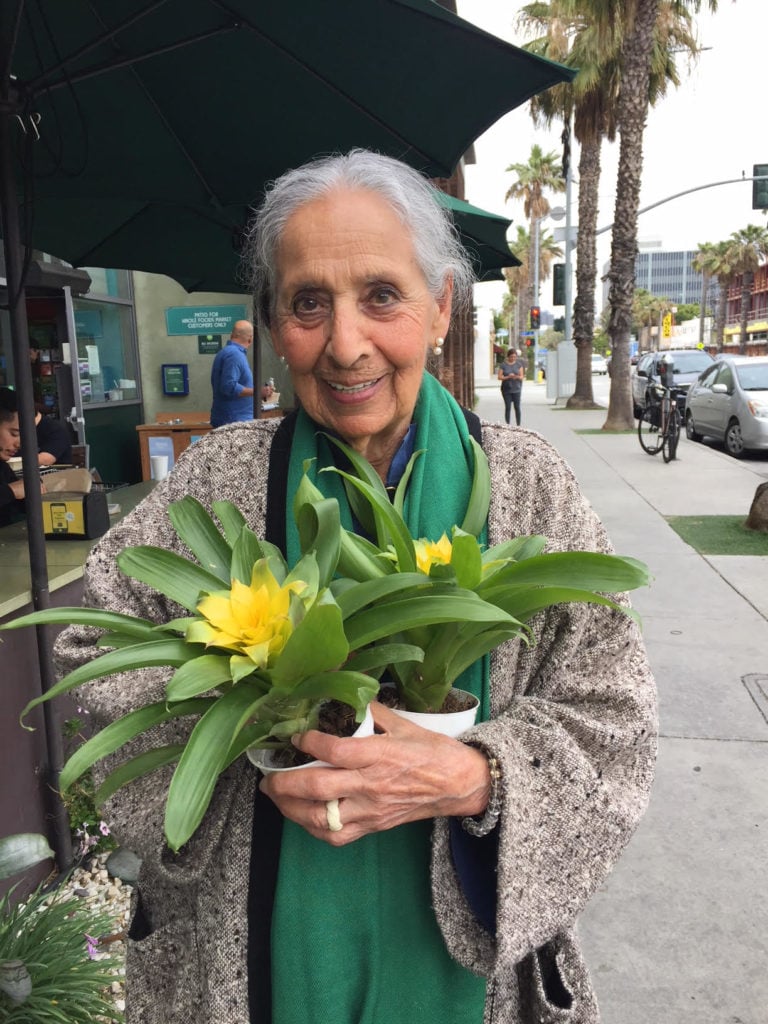
For decades, the inventive painter's career took a back seat to those of her more famous family members. Not anymore.

Sarah Cascone

At 97 years old, Luchita Hurtado hardly expected to become one of the breakout stars of “Made in LA 2018” at the Hammer Museum in Los Angeles. Despite tirelessly working for decades, the longtime painter of surreal, inventive compositions was content to let others take the spotlight: her second and third husbands, Wolfgang Paalen (1907–1959) and Lee Mullican (1919–1998), were both artists, as is her son Matt Mullican (1951–).
Born in Venezuela, Hurtado moved to New York City as a child. Since then, she’s lived in Mexico City, San Francisco, and Taos, New Mexico, but has called Los Angeles’s Santa Monica home since 1951. Throughout her career, she has counted such celebrated artists as Isamu Noguchi, Wifredo Lam, Man Ray, Rufino Tamayo, and Agnes Martin among her friends. But despite keeping such rarefied company, Hurtado never shared their fame.
The curator Anne Ellegood, who co-organized this year’s Hammer Biennial with Erin Christovale, first met Hurtado when the painter’s son Matt was included in a show at the museum back in 2014. When she finally set up a studio visit with the elder artist, Ellegood found a lifetime’s worth of work, most of which had never been seen. Hurtado has shown at a handful of venues over the years, but a 2016 outing at Park View Gallery in Los Angeles was her first solo show since 1974.
At the Hammer, Hurtado is represented by 11 paintings, all completed in the late 1960s and early ’70s. Several are partial self-portraits, her nude body appearing foreshortened at the edges of the canvas. The unusual perspective sets her breasts, legs, and feet against backdrops of blue skies or a patterned rug. It looks as if one of Magritte’s models time traveled into the future and decided to take hold of the paintbrush herself. The other works included in the Hammer show are surrealist landscapes, of hills and mountains that look almost like parts of the body.
This turn to figuration represented a major change for the artist, who spent much of the 1940s and ’50s making abstractions resembling tribal and pre-Columbian art, which she showed at her recent Park View exhibition. Across the decades, however, her eye for color remains constant, even as she experimented with different styles and media.
We talked to Hurtado about her nearly 80-year career, her family, and what comes next for a 97-year-old artist whose drive to create is seemingly inexhaustible.
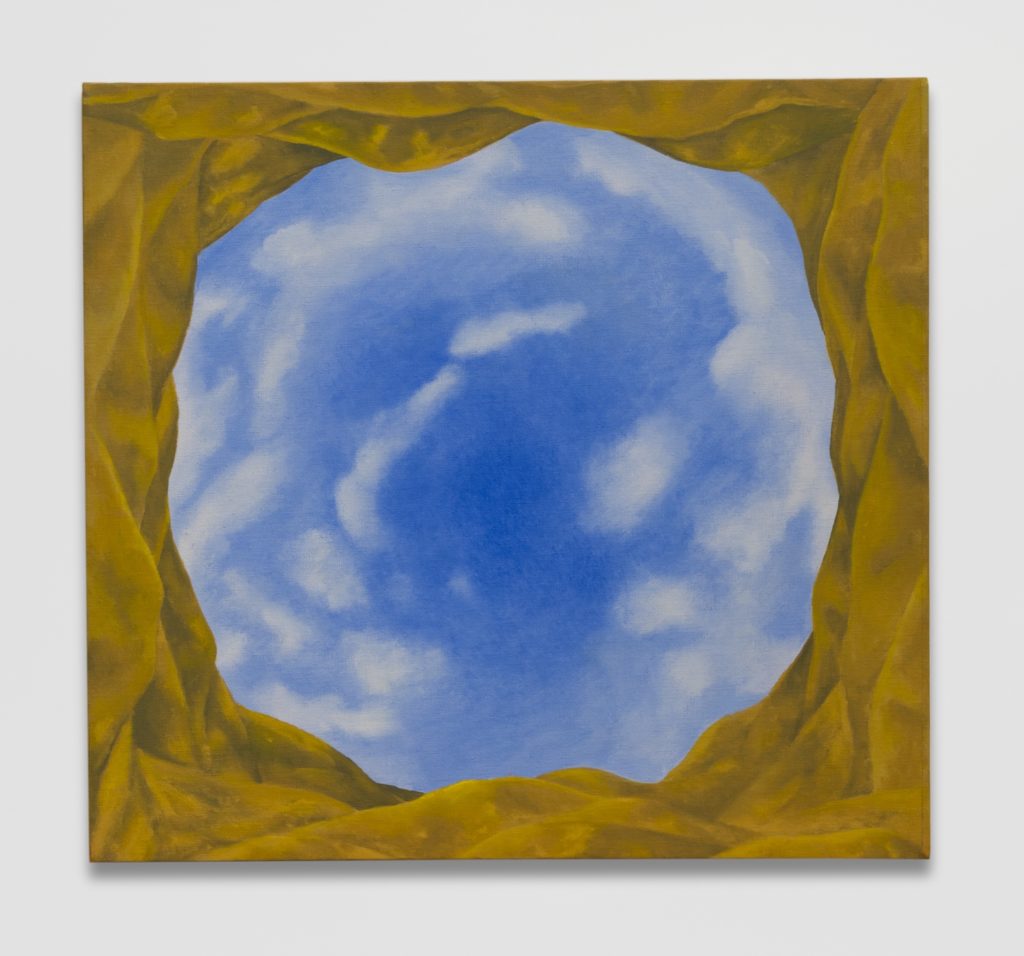
Luchita Hurtado, Untitled (circa 1976). Courtesy of Park View/Paul Soto.
Do you paint every day?
I always do. Yes. as a matter of fact, I just finished a painting which makes me every happy. And I have a dealer now [Park View/Paul Soto, in Los Angeles and Brussels].
I never had anybody who promoted my work, and I never promoted my work either. There are people who do, and people who don’t—and I don’t. I earned a living. I’ve done window displays and all kinds of things connected to art, but never [made money from] my work.
When did you decide that you wanted to be an artist?
That happened very early in life! I went to school downtown. At the time it was an all-girls school called Washington Irving. As a matter of fact, my mother thought I was studying dressmaking or something like that. At graduation, she saw that it was an art school, and she was very upset. But I said that, you know, this was my passion, and she understood.
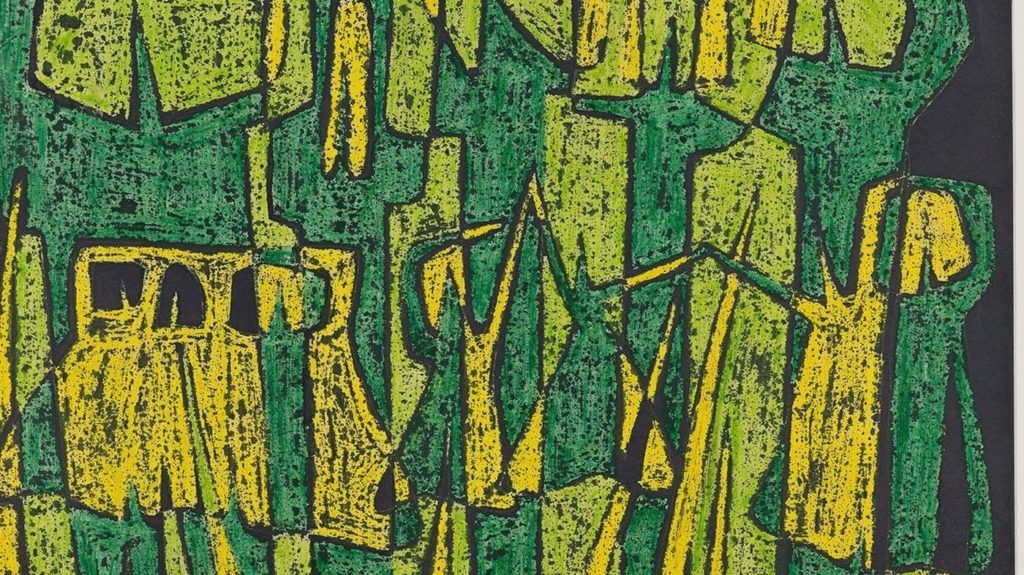
Luchita Hurtado, Untitled (circa 1950), detail. Courtesy of Park View/Paul Soto.
After school, you worked as a fashion illustrator and made murals for Lord and Taylor. How did that come about?
I married early, when I was just out of high school, and left home. I had two children, but I married a very unreliable man, and he abandoned us to live with someone else. It was a very bad ending to a very bad situation.
[Up until that point] I had never worked in my life. [But after we split], he never supported me or my children. What I did was fashion illustration and designing. I’ve always loved clothes, so that was easy for me. I made good money. They paid $100 a page in magazines. If you made three pages, you lived richly. You know, subways were a nickel!
But you went on to find happiness in your personal life.
I married someone else in time. I fell in love with an artist. His name was Wolfgang Paalen. He was an extraordinary person. But I had a child [from my first marriage] who died. He got infantile paralysis [polio] when he was six. That was one of the most tragic moments of my life.
Paalen told me that he couldn’t have children because everyone in his family committed suicide, and he didn’t want to pass that on. I needed a child, and he understood.
Then Lee [Mullican] came along, my husband, and we were married for 40 years. A long time! I have two children who are living, and grandchildren. One son lives in Europe and he is an artist [Matt Mullican]. He is very well known. He had a big retrospective in Italy, and I flew out for the opening. He filled a museum in Milan. I told him he was showing off! [laughter]
There is nothing better than my son’s work. As a child, he had that facility. I knew he would end up being an artist.
In addition to being married to two artists and the mother of a third, you were friends with some of the greats. I heard that you had an intimate moment with Marcel Duchamp, who gave you a foot rub. What is the rest of that story?
When I was living in Mexico, I would stay with my friend Jeanne Reynal whenever I went to New York. She was an artist who made mosaics, and she knew everybody. Marcel was a very close friend [of hers], and I always enjoyed his conversations.
That particular day, I had my shoes off and was sitting on this small sofa. Marcel sat by me, and he started to massage my feet. People were interested in those things, you know, and there was all this talk—”Oh, did you see? This a big deal!”—but I didn’t take it amiss. There was nothing between us: He wanted to massage my feet and that’s that.
I enjoyed it! Who doesn’t like their feet massaged?
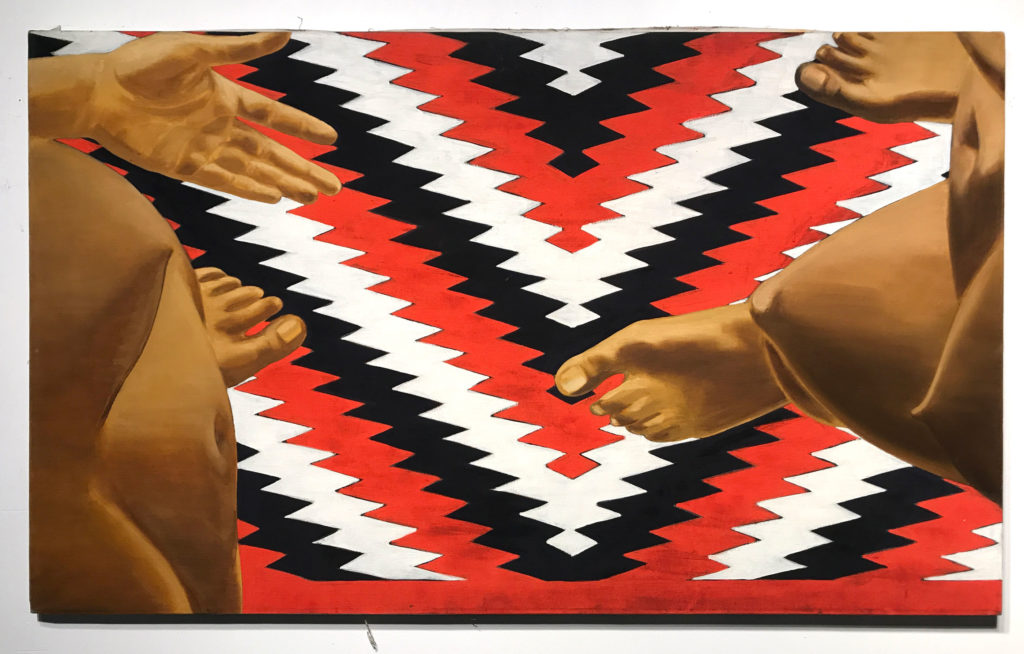
Luchita Hurtado’s Untitled (1970). Photo: by Cole Root, courtesy of the artist and Park View/Paul Soto, Los Angeles and Brussels.
You also knew Frida Kahlo and Diego Rivera.
I lived in Mexico and I’m an artist, I was married to an artist, and they were artists. We lived in the same neighborhood. The world wasn’t as big as it is today, so everybody knew everybody.
You’ve spoken about how, at the time, Frida was much less well-known than Diego. Did you ever commiserate with Kahlo about being married to a more famous artist?
We never talked about those things! We talked about dinner, and ordinary things. Frida Kahlo was painting about herself, like all painters do. She was a cripple, and what she had to contend with was physical pain. She did that very well, and she looked always wonderful. She wore those Mexican costumes that are very hard to wear—they’re not comfortable.
Frida would be amazed by how famous she has become for the paintings she did. I think it would have amused her to no end.
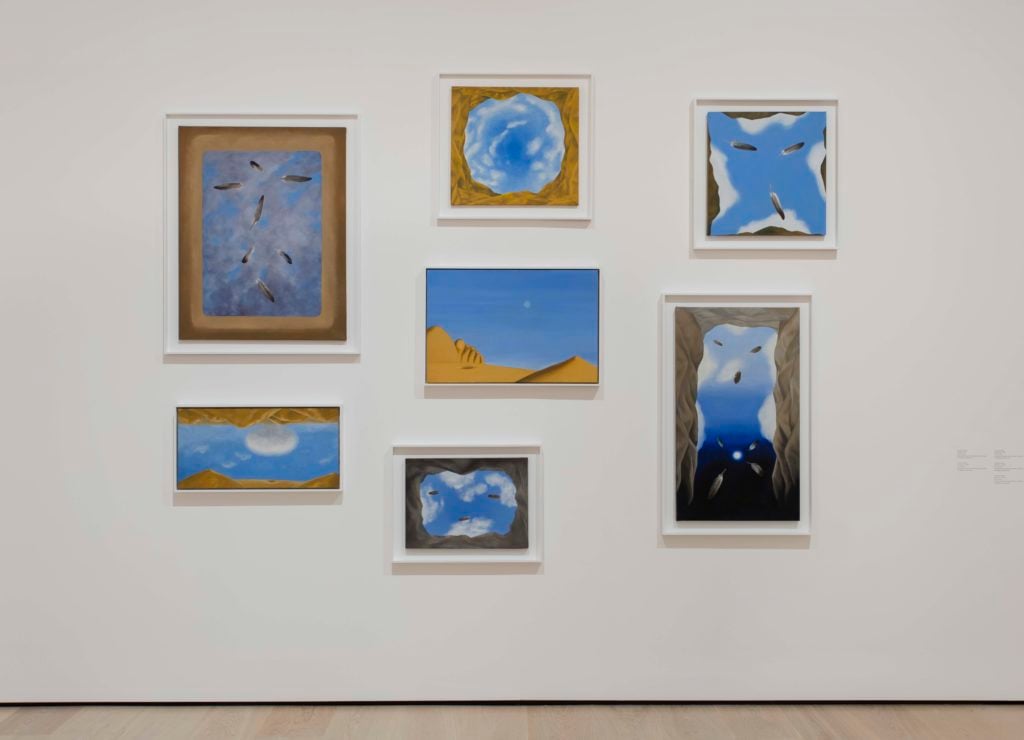
Installation view of work by Luchita Hurtado on view in “Made in L.A. 2018” at the Hammer Museum. Photo courtesy of the Hammer Museum.
Being married to two artists, did you find that your own work took a back seat to theirs?
Not necessarily. I have works from those years as much as any other years. I’ve always worked, even when I had young children. I would work at night and whenever I could. I never stopped. I’m still working today. At 97, you have many pains. [laughter] You have many challenges, health-wise. But I’m inquisitive still.
Over all the years, did you ever hope to show your work in galleries or museums?
That has nothing to do with my work! You see, my work is a necessity: I want to do it, so I do it. I want to draw, so I draw.
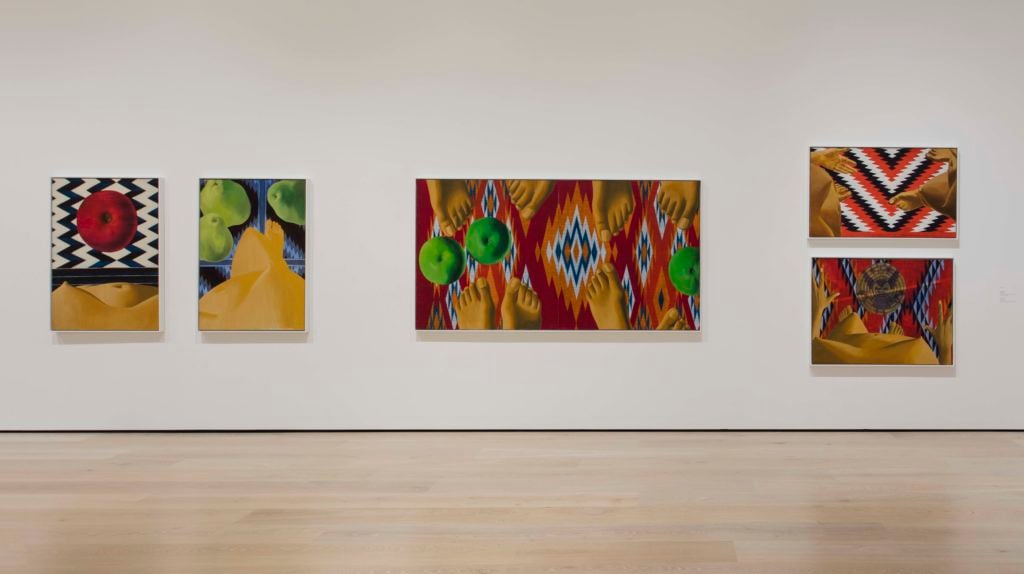
Installation view of work by Luchita Hurtado on view in “Made in L.A. 2018” at the Hammer Museum. Photo courtesy of the Hammer Museum.
But how does it feel now, after all these years, to have work at the Hammer?
Of course I enjoy it—it gives me a lot of joy. I’ve worked more than I would without it. [Showing your work becomes] an impetus to do these things. It helps you to get new ideas, and it inspires you, but it’s not an end in itself, whatever exhibition you’re in.
What was this work that is now on view at the Hammer about?
I’d have to think about it! I have no idea! In the ’70s, I was 50 years old, very young still. I don’t even remember where I was. It doesn’t help that I’m 97. You see, I should be in bed with my eyes half closed, but I’m not—I’m working!
I recognize [the work at the Hammer] as mine of course, but I feel the same about all my work: “Oh nice, I did that. I like what I did.” But what I did then is certainly nothing like what I’m doing now.
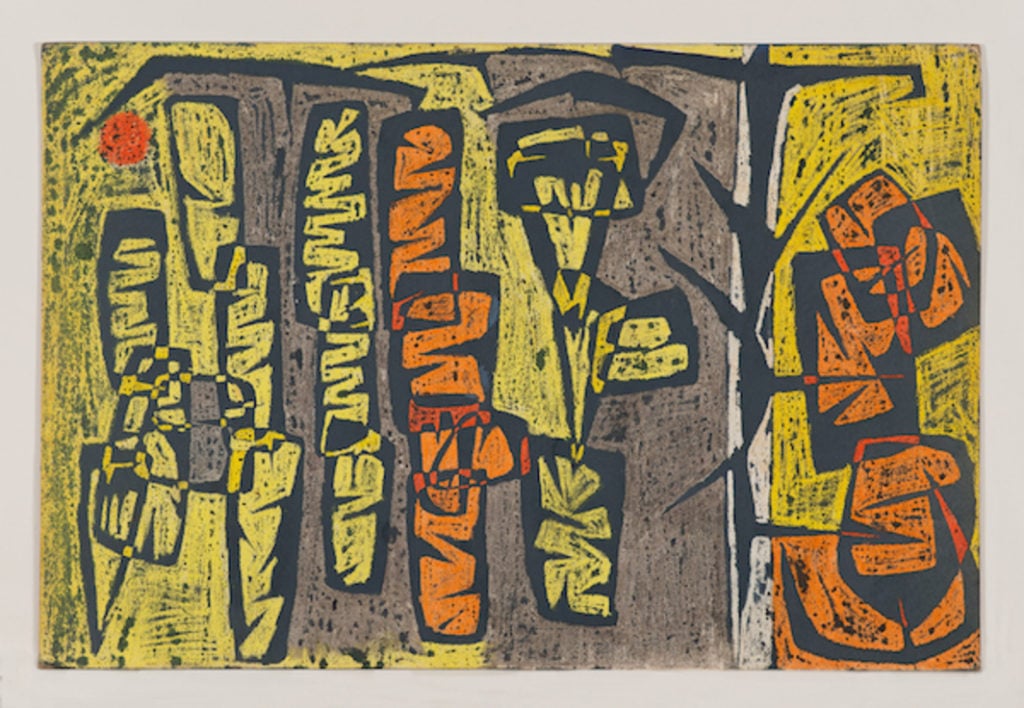
Luchita Hurtado, Untitled (1950). Courtesy of Park View/Paul Soto.
Are you surprised to have your work finally getting attention this late in the game?
No, I’m not surprised. I’m very pleased, but as I told you, I’ve never knocked on doors and said, “Will you show me?”
It’s a very divided world, up to a point. It was a man’s world. I’m 97, so I remember Judy Chicago’s whole group [the CalArts Feminist Art Program]. They were very strong, and they objected and promoted themselves.
What is your daily routine like?
I don’t have a daily routine. Every day is different. I wake up in the morning and I say, “I have another day; how marvelous. I didn’t die in my sleep!” My life is very, very happy. I’m one of those people whose cup is half full always. Never empty.
At my age, you’re near the exit, eh? It’s all a surprise. I don’t think it’s going to be the end either. I think there are just borders in this existence. I think it goes on—I expect to fly, at some point. [laughter] Who knows? My next life is going to be a grain of sand!
“Made in LA 2018” is on view at the Hammer Museum at UCLA, 10899 Wilshire Blvd., Los Angeles, June 3–September 2, 2018.